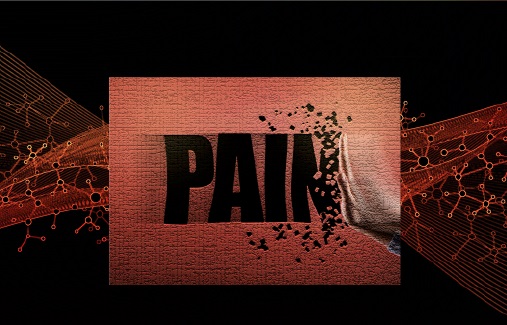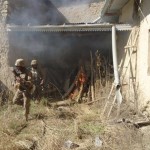Dr. Fozia Kamran Cheema
Understand your Pain-Pain is not equal to physical damage
Few of us like to be in pain when we have it, we want to get rid of it as soon as possible. This makes perfect sense as pain is uncomfortable.
Does modern pain research suggest that we should change our understanding of what pain is? From being something that is only associated with tissue damage to something more complex, where a wide range of factors of biological, psychological, and social nature come into play.
Further, the pain is less associated with the biological factors the longer the pain has been going on, providing new treatment options for people with chronic pain.
Why should you learn about pain?
Having pain for a longer period of time can cause various negative emotions such as powerlessness and fear. The purpose of learning about pain is precisely to give you more control and overview of your situation, as well as to give you a greater sense of security. The latest research on pain, and its treatment suggests that there are many things you can do to treat your pain herby decreasing your dependency on your therapist/doctor. Moreover, it seems that understanding your pain can reduce your pain and increase your functional level.
Pain is basically a good thing—-Pain protects
Pain ensures your survival by changing your behavior and actions. For example, it is a good thing that you experience pain if your hand accidentally touches a hot burner.
Conversely, there are people with a genetic mutation called CIPA, which makes them unable to feel pain, which means that they must be constantly vigilant so that they do not harm themselves. It becomes difficult for them to detect danger when not getting a warning in the form of pain.
Professor Lorimer Moseley, an internationally renowned pain researcher defines pain “as an unpleasant conscious experience produced by the brain when the sum of all available information suggests that you need to protect a specific part of your body.”–
The definition above by Professor Moseley provides the understanding that pain is more about protection and not harm.
pain is about all available information. Our brain tries to create the most appropriate experience for the situation we face by drawing on everything in our reality, including our experiences, beliefs, expectations, sense of sight, sense of hearing, sense of touch, etc.
Pain as an alarm system.
Pain can be compared with the alarm system in a house.
- Alarms/nerves
In the house we have various sensors such as smoke alarms and video surveillance and these can be compared to the body’s nerves, which detect changes in cold, heat, pressure, and chemistry.
These sensors constantly collect information from the house and its surroundings. If there are changes like smoke or movement, the sensors produce noise to notify the homeowner.
- The homeowner/spinal cord
The homeowner can then pass the message on to the emergency services (brain) about the alarm, including the address and room. The homeowner can also choose not to call brain if he thinks the situation is under control.
- Emergency services/brain
As the call reaches the emergency services (brain), the brain verifies the situation. Is it necessary to call a police car? Does the owner just need an SMS? Should anything be done at all?
In the brain, there is a lot of knowledge, experience, and expectations, which together is used to determine what should be done in a given situation.
- Learning
Once the body has responded to the given situation, the brain assesses whether the reaction was appropriate or not. Should the sensitivity of video surveillance be increased with better and more cameras? Were too many police cars called in? Or should the alert have been greater? The brain will use this evaluation to whether it should hurt or not if you experience a similar situation/stimulus again.
An overprotective alarm system:
If our brain/alarm system keeps on getting a false alarm, it becomes overprotective, and very little stimulus is then required to create a bigger amount of pain, this pain is called chronic pain. Now our reliable friend pain who always signals us about dangers turns into a beast and it is difficult to find the context of its conduct.
This would be like having the same sensors on a normal house as in the Prime minister’s residence. Instead of a normal homeowner, you now have an overprotective security guard with a direct line to the emergency services, who will not hesitate to call brain and thus continuously producing pain.
On the positive side, with chronic pain, you are safer than people without pain, as your system protects you to a greater extent.
Pain, therefore, depends on many factors and not just on whether the alarms/nerves are set in motion.
All these factors make pain complex, and because pain is complex there are also many misconceptions about pain.
Among other things, it is a general misconception that pain and injury are equal to each other. And, if you’re in pain, it’s always because of an injury, and if you get an injury, it’s always going to hurt.
Pain is an unpleasant experience that can be associated with injury, but it is also possible pain is there even in the absence of injury and in the same way, injury can result in pain and no pain at all.
Injury without pain
In our daily lives, we can find examples that we can do damage to the body without noticing. For example, have you had a wound or bruise that you haven’t noticed? Maybe you’ve been to the woods or in the garden and got a little scratch that you only discovered when you got home. So here you have done a tissue injury without experiencing the pain. These are small injuries, but in more extreme situations, such as in war, soldiers have reported being shot without knowing it before they got to safety.
Pain without injury
We can also find examples of how we experience pain but without a real injury. Imagine you’re eating cold ice cream too fast. So, what happens? You get pain in the forehead, also called brain-freeze. Is it because you get a very serious and short-term brain or head injury? Is your forehead broken in that situation? No, right? Yet you experience pain. No harm, but still a pain… Interesting.
Can we scan our pain?
A large number of studies show that tissue changes that were previously blamed for pain are also frequently found in people without pain.
Changes we see on our scans are similar to age-related outer changes just as gray hairs and wrinkles.
Therefore, osteoarthritis and discuss protrusions without pain are perfectly normal.
Cartilage damage and meniscus lesions on your scans do not always cause pain.
Does that mean the tissue changes can never have anything to say? No, but they are usually only a single piece of your pain puzzle and may well be present without you experiencing pain.
Pain is Complex and contextual:
Pain is complex and depends upon Perception and experiences
For example, have you noticed that during talking about lice you suddenly experience itching in the scalp? Has the stimulant in your scalp changed? No, but your focus probably has, and it has changed your experience.
Past experiences with your pain, your beliefs about pain, what you have been told by health professionals about pain, how rested you are, what mood you are in, etc. are all pawns in your pain experience.
So it’s all up in your head? where is the pain?
We regularly meet the question of pain only sitting in the brain and is something you think about. The short answer is NO.
For example, you cannot create pain just by deciding to do it.
But disaster thoughts, avoidance behavior, poor expectations, and negative beliefs about the pain, are the pieces of big pain puzzles.
Pain is not only tissue damage rather it is a result of a series of happenings in your life.
Where’s the pain? We can’t say with certainty that the pain is in the brain or in the body. What we can say for sure is that the pain is in the person experiencing it and is a feeling influenced by our cultural, personal, and professional experiences.
And contrary to popular belief, pain is treatable and recent research on pain shows that there are many easy measures you can do to treat your pain, including what you have just done – learning about pain -understanding that pain is not equal to damage, keeping yourself active and graded exposure to what you would like to do again and much more.
 Note: Dr. Fozia Kamran Cheema is a pain management physiotherapist at Copenhagen University Hospital, Copenhagen Denmark. She can be contacted at her Email. You can follow her on her Twitter also
Note: Dr. Fozia Kamran Cheema is a pain management physiotherapist at Copenhagen University Hospital, Copenhagen Denmark. She can be contacted at her Email. You can follow her on her Twitter also






